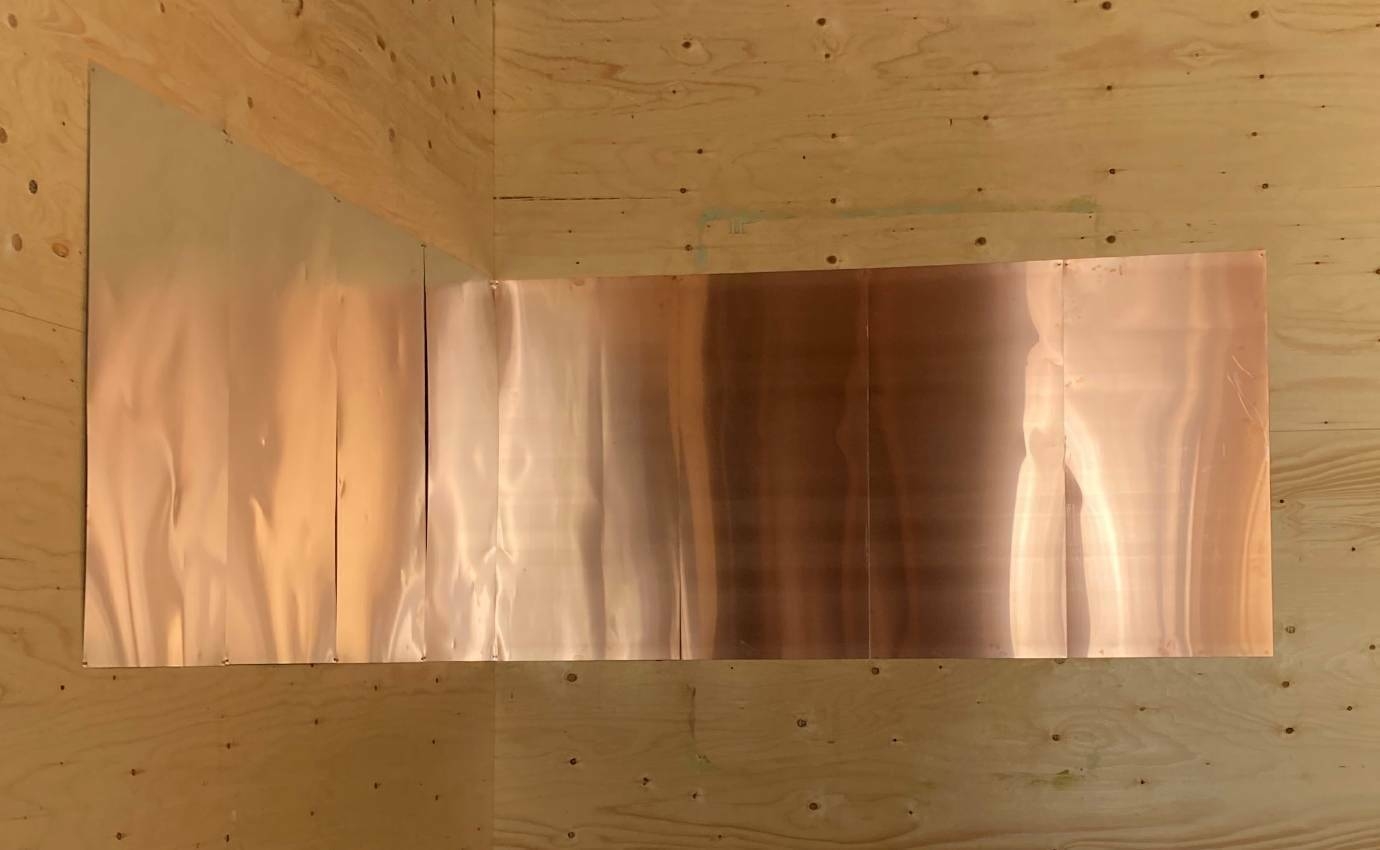Centered in the room under the skylight is a pavilion-like structure. Elements such as sand, straw and concrete blocks are surrounded by steel plates that are attached together. Thin copper and aluminum plates cover the walls and form reflective surfaces that point back to their surroundings. The surfaces become abstract shapes and moving images where light, objects and people are distorted. Rather than representing something concrete on the image surface, the works open for reflection and speculation. On one of the long walls, we find a small drawing from the artist’s sketchbook. The sketch is the starting point for the exhibition, a dreamy and abstract drawing.
Aas’ whimsical, sculptural works give the imagination great scope before it all crystallizes in a sensation of absence and emptiness. It is easy to attribute stories and references to the sculptures, even if we are repeatedly reminded of the emptiness of it all. Like in the work Exhibit C, where a collapsed man in a suit with a western hat has mysteriously vanished into thin air, or has he maybe undergone a metamorphosis? The stories we tell ourselves and others, in order to avoid the uncertainty, not knowing, not existing. The attention is then directed towards the concrete evidence we can find that the physical, visible world is real.




